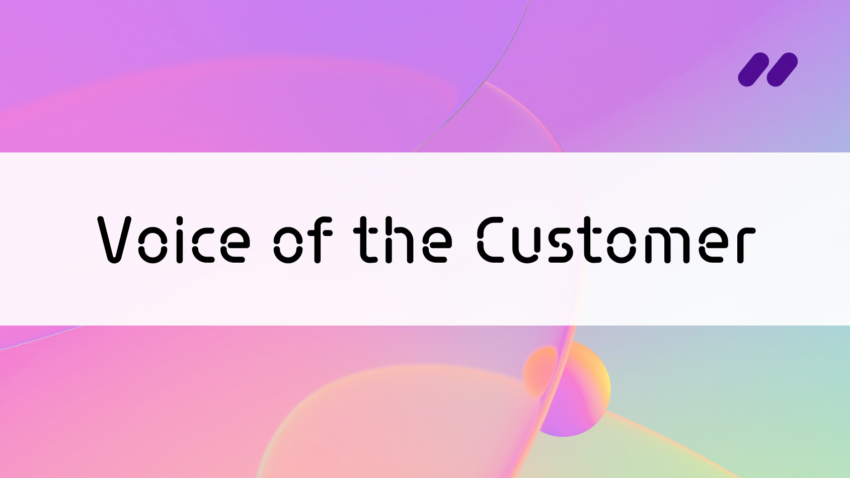It’s Saturday afternoon and Meta S. Brown is on the phone from Chicago telling one of her favorite stories. It’s about an auto parts manufacturer. Brown, an expert in data analytics and the voice of customer, can hardly hide the delight in her voice as she gets to the good part. “They ran text analysis on customer warranty claims and discovered something totally unexpected—a technical problem!” says the Forbes contributor, author and keynote speaker. “Feedback intended for finance ended up providing a mechanical insight! They fixed the problem before it cost the company millions of dollars.”
Therein lies the value of listening to the voice of the customer with an open mind—at least, with no preconceived notion of what you should be hearing. Capgemini’s Digital Transformation Institute drove the point home in the summer of 2017 when they released the results of their study on customer experience (CX), a fast-growing field that focuses on keeping buyers and brands happily in sync. The study concluded that eight out of ten consumers were willing to actually pay more for a better interaction.
“Experience is the new battleground, and how you connect will determine how you win,” said Pierre-Yves Glever, Global Lead of Digital Customer Experience at Capgemini, when commenting on the study in a press release. “Organizations that tightly link their business operations with customer experience will reap the benefits in both streamlined operational efficiency and satisfaction.” Paying attention to the voice of the customer (VOC) is rapidly becoming a top priority for companies who want to enhance customer experience and retain brand loyalty.
Jump to a section:
- What is the voice of the customer?
- Why do you need a VOC program?
- How does AI impact voice of customer analysis?
1. What is the voice of the customer?

If the voice of the customer is what customers are saying about a company, the voice of the customer program is what the company is doing about it. In other words, it’s the pathway taken to use data to change how organizations do business. The goal of a VOC program is to get actionable insights into the hands of decision-makers. Once enlightened, they can continually improve their company’s service or product. It’s an outside-in perspective. The more feedback, the better.
Implementing a VOC program, however, can have speed bumps, like any enterprise-wide initiative. “The challenges do vary based on the organization and their culture. Getting the business to truly care about the voice of the customer enough to act on it can be a significant challenge for many organizations,” said Chris Randall, Chief Customer Officer at ResponseTek, in a recent interview with CXO Leaders Summit.
“Saying you want to improve satisfaction, loyalty, and advocacy is one thing,” he continued. “Actually putting in place the strategy, processes, support, training, communications, compensation, etc. required to enable fast change is an altogether more challenging commitment to obtain. For those who have achieved this, the results easily follow.”
Implementing this kind of strategy at your organization usually encompasses voice of the customer software like text analytics in order to understand large volumes of customer feedback data. This software is used to analyze sentiment across the customer journey from different channels like customer surveys, reviews, and support tickets.
Learn more about the voice of the customer
2. Why do you need a VOC program?
The benefits of having a VOC program outweigh the grumbling that comes with any organizational change. VOC programs improve customer satisfaction, brand management, product development, and marketing efforts, among other things. Look at the successes of Zappos and Ritz-Carlton—known for their intelligent use of VOC to create a thriving customer-centric culture.
A study by The Aberdeen Group called The Business Value of Building a Best-in-Class VOC Program discovered that companies who invest in customer feedback programs experience much higher client retention and employee engagement, and spend less on customer service. The study also showed that companies who implement a VOC program generate a year-over-year increase in annual company revenue that’s 10 times greater.
It’s no surprise that CX expert Annette Franz highly recommends voice of the customer tools. As the CEO of CX Journey, she’s well positioned to offer advice. “Unless you have executive commitment from the get-go, it’s just a listening exercise,” she says, chatting on the phone from California. “Without it, you’re not going to get the financial resources, the human resources or the capital resources to fix what you hear. Or to celebrate the wins. That’s where a lot of programs fall down.”
She recommends creating one centralized office for the VOC program, as opposed to different pockets throughout the organization. “It takes a coordinated effort, and having one office also helps with accountability,” she adds.
Yet, despite Franz’s warning about securing executive commitment for a voice of the customer software, there’s good news if you can’t achieve it right away. Meta Brown in Chicago advises not to worry if the mandate isn’t top-down from the start. “In my opinion,” she says, “more happens from the middle—that first or second level of management. You can still get great results.”
3. How does AI impact voice of customer analysis?
Maxie Schmidt, a principal analyst at Forrester, is also a big believer in VOC strategies. Furthermore, she thinks AI will change the future of customer feedback. “I predict advances in AI-enabled emotion analysis will equip firms to understand how customers feel. This will replace metrics like Net Promoter Score,” Schmidt said recently at a Forrester-hosted CX event in Boston.
Net Promoter Score (NPS) measures customer experience and predicts business growth by asking end-users one question: How likely are you, on a scale of 0 to 10, to recommend our product or service to a friend? It’s a long-standing CX metric, making Schmidt’s prediction about replacing NPS a bold statement. “AI tools help surface unknown issues or nudge employees to make real-time interventions,” she explained. “This will finally create a tight data-to-insight-to-action loop.”
When customers take the time to write comments and posts, or answer surveys or talk to customer service, it’s because they have something to say. If you don’t take the time to use the data, it’s a breach of trust.
This loop starts with feedback, and shoppers aren’t short on ways to make themselves heard. From social media posts and surveys to call center reports, it’s easier and easier for businesses to get to the “why” behind customer complaints and satisfaction. “However, all these conversations with customers from every channel can pile up,” says Charles-Olivier Simard, Keatext CTO and expert in computational linguistics and semantic technologies. “AI-powered text analytics turn feedback into actionable items, quickly. Otherwise, you lose customers and opportunities.”
Meta Brown agrees with Schmidt and Simard. She’s flabbergasted when companies don’t try to glean deeper insights from feedback using text analytics. “When customers take the time to write comments and posts, or answer surveys or talk to customer service, it’s because they have something to say,” she explains. “If you don’t take the time to use the data, it’s a breach of trust.”
Breach of trust sounds like a sure-fire way to lose end-users. And there is another danger to leaving customer feedback less than fully considered. “If you analyze feedback using only keyword searches, you get blind spots,” says Simard. “Deep learning starts from the text, not a list of keywords. It tells you what’s actually there, not what you think you’re looking for. It’s an essential component of an effective VOC program. Without it, you’ll probably spend money on the wrong things when trying to improve customer experience.”


